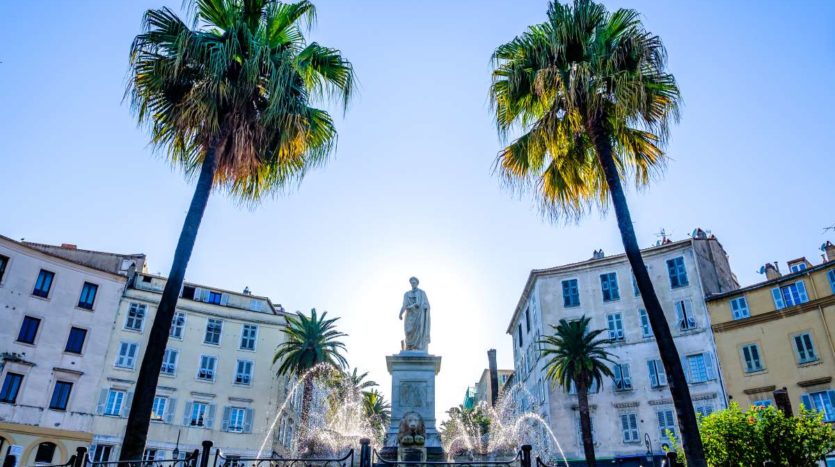Stay in Corsica: 10 Stages Not to Be Missed!
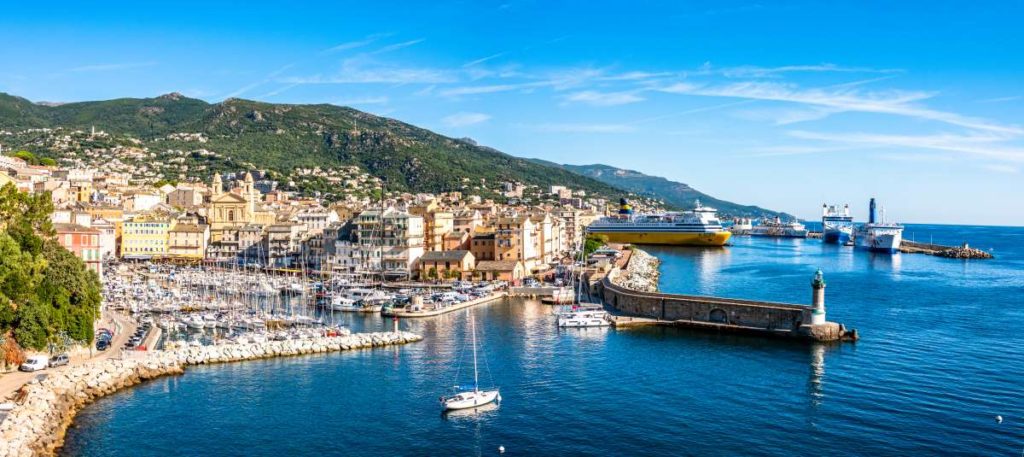
Discovering Corsica is a true journey in terms of sight, sound, and taste. It also provides a variety of activities related to its natural resources, ranging from a short stroll to the GR20, a challenging path. Not to mention the maritime activities, which may be done in a variety of locations and provide a variety of gorgeous surroundings.
When planning your trip, you’ll have to choose which sites to visit based on your preferences and from a diverse range of options. As the Isle of Beauty is well titled, here is a non-exhaustive list of must-haves to assist you. Let’s get started with our ten pre-selected steps; the rest is up to you to discover!
#1 Ajaccio
The capital of Corsica, an almost mandatory stop, already has significant surprises, such as Napoleon Bonaparte’s birthplace, a thriving market, and the majestic 16th-century Cathedral of Notre-Dame-de-l’Assomption. Place de Gaulle, also known as “Place du Diamant,” is a key landmark that marks the boundary between the old and modern districts and helps you to traverse the surrounding streets, which are lined with a thousand stores and restaurants.
Ajaccio is in Corsica, so it seems redundant to mention that there are some lovely beaches there. For the more adventurous, a detour to the west will lead to the Sanguinaires Islands, a protected natural park known for its diverse flora and fauna and popular with visitors.
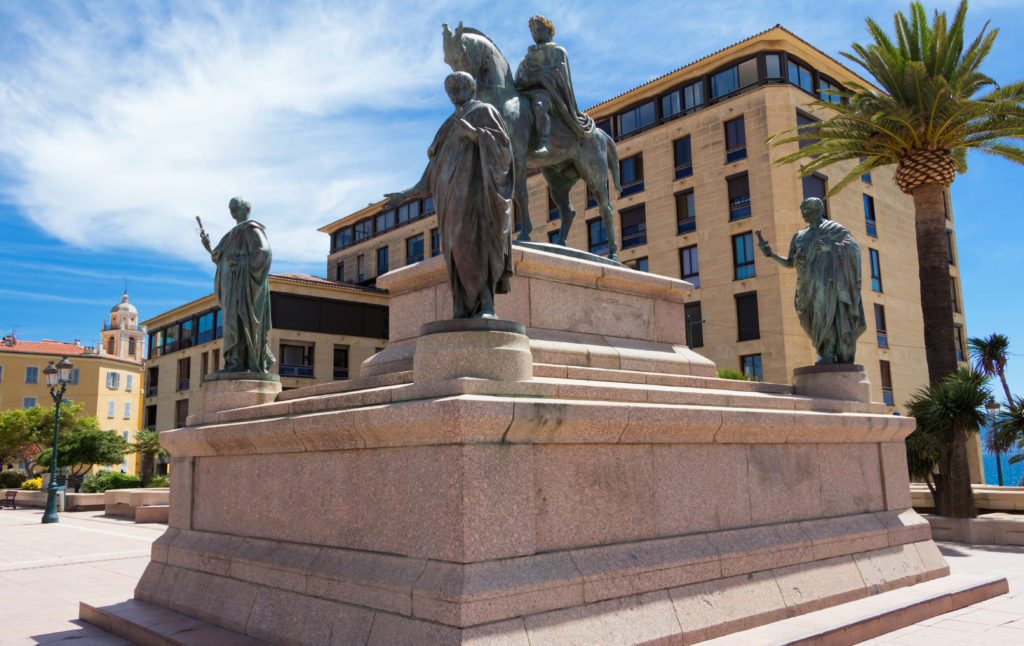
#2 Porto-Vecchio
This seaside community astonishes visitors, particularly since the ancient town is adorned with the walls of a 16th century Genoese stronghold. The attractiveness of the area, which sees its population quintuple in summer, is completed by a marina brimming with activities and Bronze Age remains spread over the surrounding hills.
The beaches of Palombaggia, with its length of sand bordered by trees, and Santa Giulia, with its lagoon-like waters, are also nearby.
#3 Le village d’Ota
The town of Ota, which is surrounded by two mountain ranges, has one of Corsica’s most beautiful views. Mount Capu d’Ota, which overlooks the homes, takes on the impression of a Sphinx preparing to devour the community in a wild and spectacular landscape.
The lovely red church and its high square bell tower will be visible from bars and restaurants, allowing for a meditative pause.
#4 Bonifacio
It would be a pity if you left Corsica without seeing Bonifacio. Despite the steady flood of visitors, this small paradise constructed on the cliffs has an essential simplicity that transports the traveler. A 9th-century castle still stands watch over the city that Genoa and Pisa battled over for years, when it wasn’t seized by a Turkish corsair!
Aside from the old town and its lanes, don’t miss the 187-step King of Aragon stairway, the marine cemetery, which resembles a tiny village of tombs facing the sea, or the Etendard bastion.
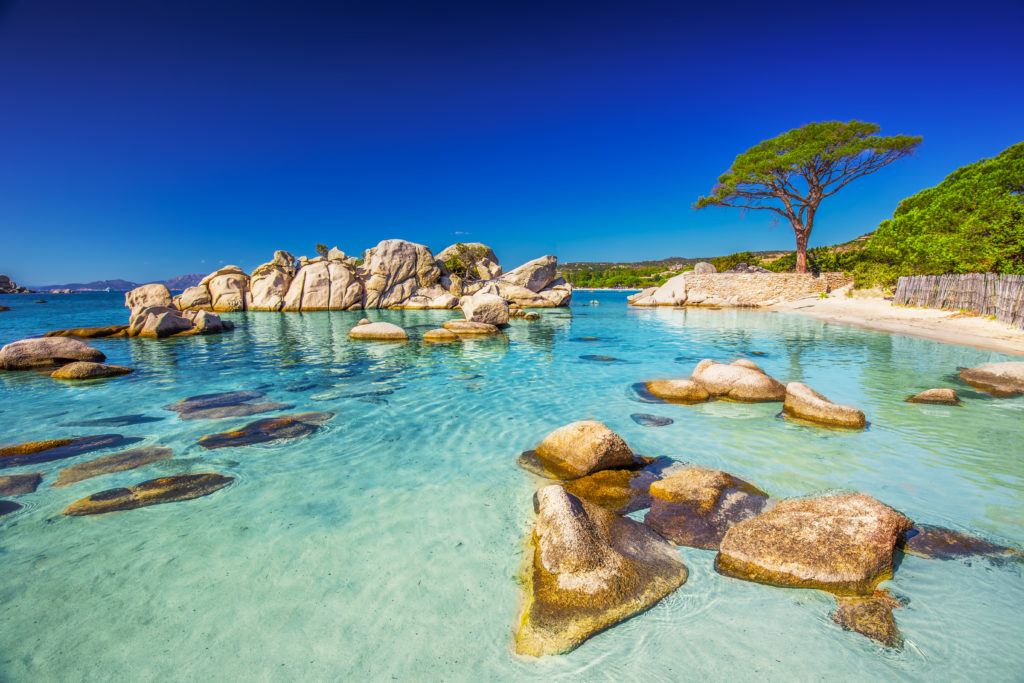
#5 Les Îles Lavezzi
The Lavezzi Islands are a natural reserve that faces Sardinia, and it shows: magnificent coves, pristine seas changing hues, untamed beaches… A group of seven islands, the biggest of which is known as Lavezzu, will provide you with defined paths and picture-perfect beaches. A stele may be seen on an islet, which was constructed in honour of the 700 sailors who perished during the sinking of the Sémillante, as related by Alphonse Daudet in Les Lettres De Mon Moulin.
You may be confident that you will be discreet so as not to disrupt the peace and quiet of the area. A boat journey, on the other hand, will provide an excellent excuse to disembark on these islands for a picnic, a swim, or a stroll away from the world.
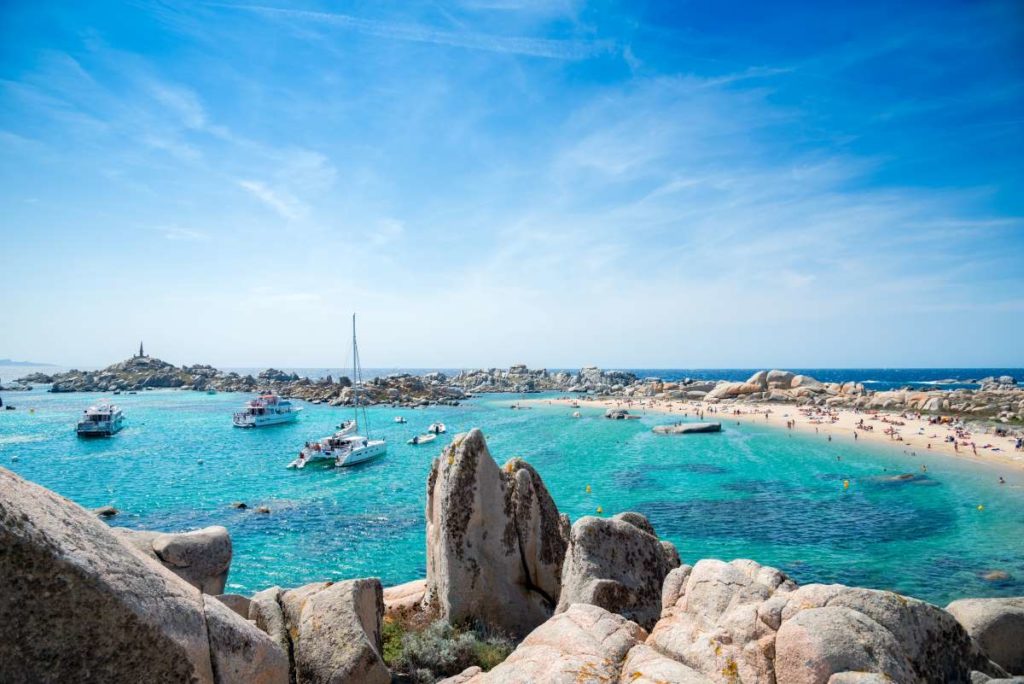
#6 La réserve naturelle de Scandola
Let’s keep the biodiversity theme going with this reserve, which provides a coastline ecology only accessible by boat, and certain areas that are absolutely off-limits to visitors since anchoring is banned. The cliffs are studded with caverns, creating an incredibly unique display of color blending.
Since 1975, the area has been protected, mostly for its scenic value, but also because it plays an important role in the conservation of Corsica’s indigenous species, including 33 plant species and several birds whose nests are protected by impassable cliffs. Inland, the reserve protects a variety of endangered species, including newts and pond turtles.
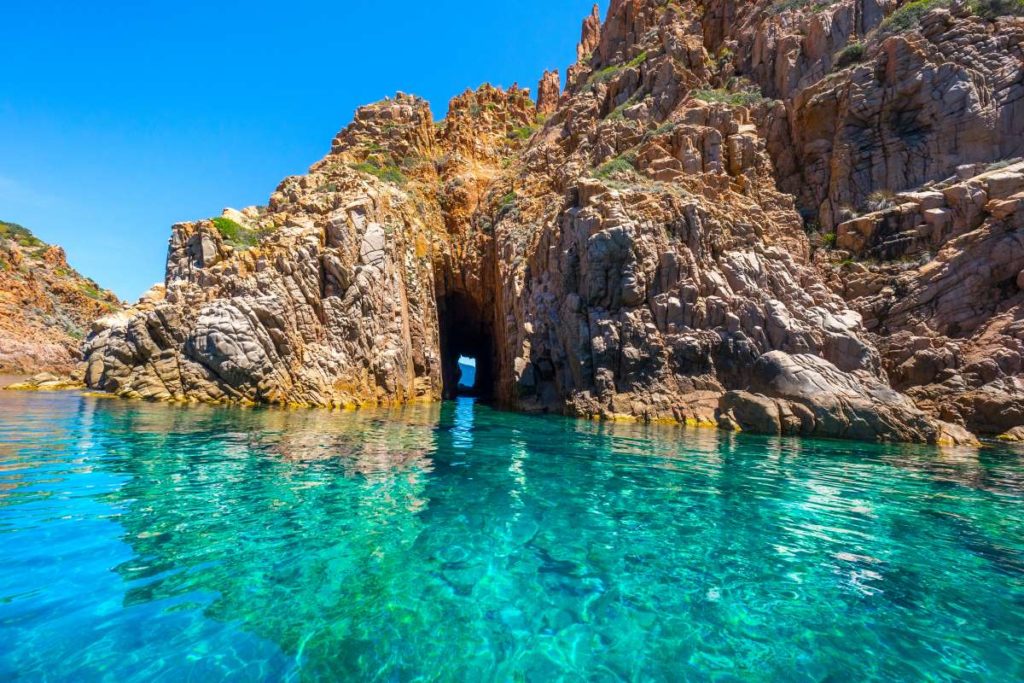
#7 L’Île Rousse
Surprisingly, Île Rousse is a beach town in northern Corsica, not one of them. Because of its red porphyry stones, the island of Pietra in the coastline extension is the source of its name.
The city symbolizes Corsica and was founded by Pascal Paoli, often known as “Père Corse” or “Babbù.” You will enjoy the Paoli plaza and its Church of the Immaculate Conception, which has ancient pieces of art, and you will walk down the Marinella promenade and see the bronze Mermaid, who, like his counterpart in Copenhagen, has been monitoring the horizon since 2016.
#8 Le Désert des Agriates
In this desert of tortuous and steep pathways, the maquis reigns supreme. Its name stems from the Latin phrase “ager,” which means “agriculture”: the aridity of these plains is simply a mirage, with water streaming from no fewer than 27 fountains and 32 springs.
Since the end of the 13th century, the area has been a breadbasket for Genoese conquerors, producing wheat and olives, as well as lemons, figs, and almonds until the middle of the 20th century. Today’s hikers will come across a landscape that has been abandoned by man but not by nature. Although not easily accessible, this desert supports a diverse range of plant species, including myrtle, strawberry tree, heather, mastic tree, and even holm oak.
#9 Le sentier des Douaniers
There’s nothing like walking the Customs trail to experience Corsica by foot and capture all of the beauty of the environment. It provides stunning landscapes, huge cliffs, rich fauna, and ancient relics, all within a three-hour stroll from Macinaggio Square, giving the entire a historical depth encouraging meditation.
You will not be the same when you arrive at the town of Barcaggio! A tranquil setting suitable to the discovery and observation of animals will be ensured by leaving early in the morning.
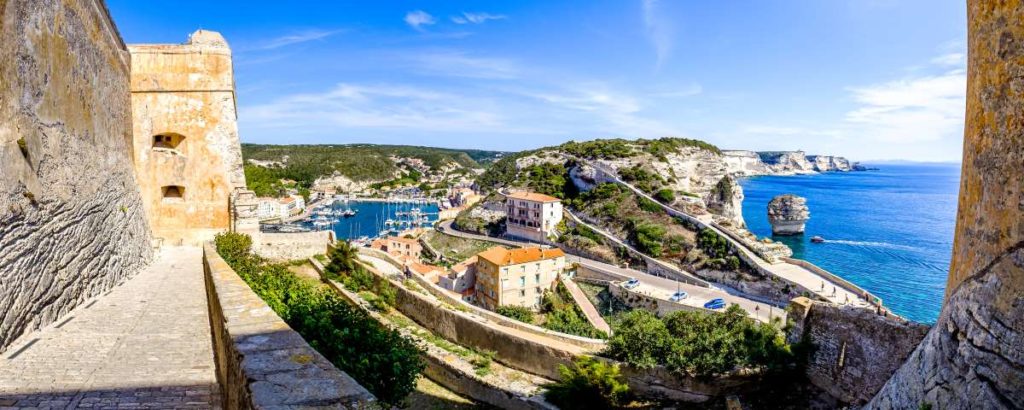
#10 les Aiguilles de Bavella
The Aiguilles de Bavella, which connect the Alta Roca to the east coast, give an American West feel to them. They have a fascinating, almost ghostly look because to their eerie shadows and grey and red igneous granite.
They are surrounded by the Bavella forest’s fir, cedar, and chestnut trees, and they are home to a diverse unique species. The hiker may choose from a variety of paths ranging in difficulty from a short stroll to a series of steps that include a quasi-climbing of high cliffs. A natural wonder worth seeing at least once in your life, but that could be said of all of Corsica’s sights.
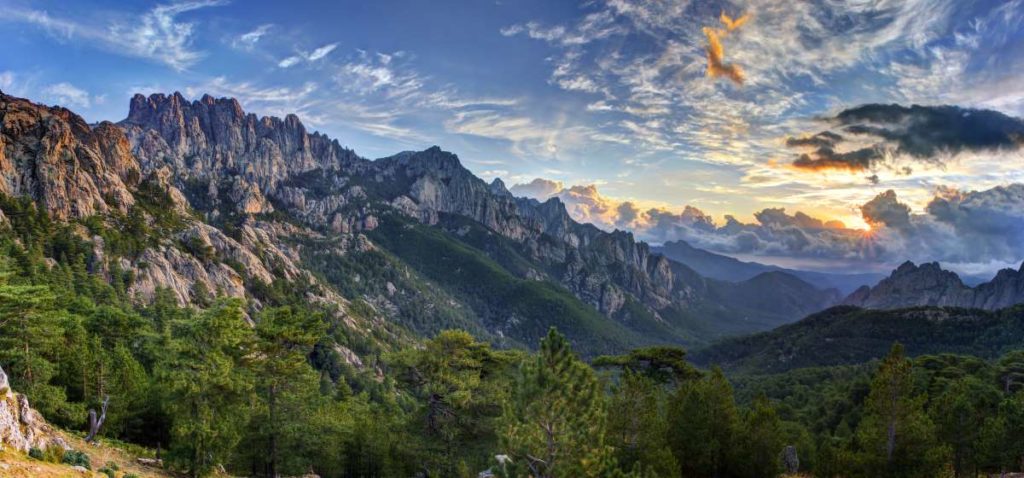
On the island, there are many more wonderful sites to visit, ranging from settlements to distinctive natural formations. During your next visit, don’t miss a trip at Calvi, Saint-Florent, or Nonza, a little community clinging to the mountainside and overshadowed by a historic fortress. It’s a wonderful thing to renew and pass on to your children!


